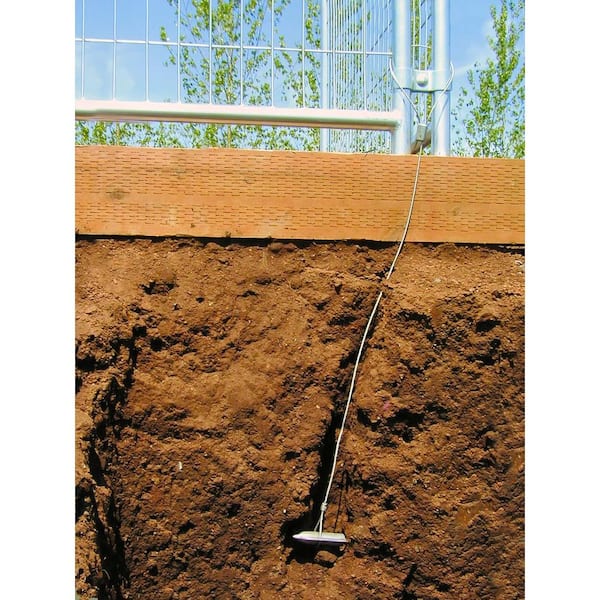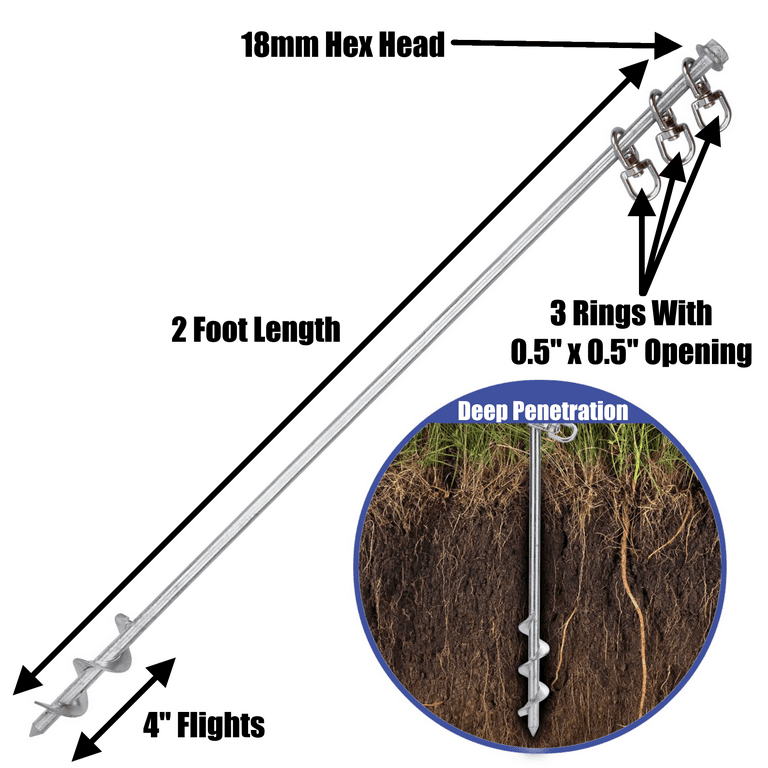Key Facts to Understand About Choosing the Right Ground Anchor for Maximum Security
Key Facts to Understand About Choosing the Right Ground Anchor for Maximum Security
Blog Article
Discover the Vital Uses of Ground Anchor in Building and Landscaping
Ground anchors are important components in both construction and landscaping, supplying important stability and assistance throughout numerous applications. Their role in anchoring hefty tools and improving dirt retention highlights their value in promoting security and sustainability.
Safeguarding Fences and Gates
Safeguarding fencings and entrances is an essential aspect of residential or commercial property delineation and safety and security in both commercial and domestic settings. Ground supports play a vital function in ensuring that these frameworks remain efficient and steady over time. By giving a durable anchoring solution, ground supports assist avoid fences from leaning or falling down because of environmental variables such as wind, dirt disintegration, or ground movement.
In residential setups, properly secured fences not just improve the aesthetic appeal of a residential or commercial property however additionally give safety and security and safety and security for pets and families. Likewise, in business atmospheres, protected fencing is critical for safeguarding properties, delineating property boundaries, and ensuring the safety of customers and employees. Ground supports can be installed in different dirt kinds and conditions, making them functional for different tasks.
Moreover, making use of ground supports permits for a much more irreversible solution contrasted to typical methods, such as concrete grounds, which can be labor-intensive and taxing. Ground Anchor. This effectiveness is specifically important in landscape design jobs where timelines are critical. Generally, the combination of ground supports right into fence and entrance installations substantially adds to their longevity, performance, and overall efficiency in securing residential properties
Maintaining Momentary Frameworks
While short-lived frameworks are often created for short-term use, their security is important for ensuring security and capability during their operational duration. Ground supports function as a reliable option for maintaining these frameworks, which may consist of outdoors tents, phases, or modular buildings. By securing these installations firmly to the ground, ground anchors aid resist wind uplift and lateral forces that could compromise the stability of the structure.

Furthermore, the use of ground anchors enables very easy removal and repositioning of short-term structures, making them an optimal option for construction websites or events that call for flexibility. On the whole, ground supports are a crucial tool in the effective and secure administration of momentary structures, guaranteeing they perform dependably throughout their intended use.
Sustaining Maintaining Wall Surfaces
Utilizing ground supports considerably enhances the structural honesty of keeping walls, which are important for taking care of soil disintegration and keeping landscape stability. Preserving walls are subjected to lateral earth pressures, and without adequate support, they can fall short, causing costly fixings and potential damages to bordering structures. Ground supports offer a trusted remedy by moving the load from the wall into the underlying dirt or rock, ensuring the wall surface stays protected and upright.
These anchors are usually installed at a fixed angle and depth, permitting them to resist the forces exerted by the retained dirt. By using high-tensile stamina products and proper installment methods, ground anchors can considerably improve the wall's efficiency under numerous ecological problems, consisting of heavy rains and seismic task.
In addition, the usage of ground anchors can decrease the explanation demand for comprehensive excavation and material usage, advertising even more lasting construction techniques. This approach not just improves the toughness of preserving wall surfaces yet additionally decreases the overall impact of landscape design tasks. Including ground anchors in keeping wall surface design is an important technique for both construction professionals and landscape architects intending to make sure lasting stability and safety.
Anchoring Heavy Tools

Ground anchors offer a dependable approach to protect equipment, distributing pressures evenly and reinforcing security. Making use of anchors enables drivers to work confidently, specifically when lifting or relocating heavy lots. In addition, in circumstances where equipment must be positioned on soft or unstable dirt, ground anchors can be mounted to boost grip and avoid devices from becoming or sinking immobilized.
Carrying out a methodical approach to anchoring heavy equipment not just improves operational efficiency yet also promotes security criteria internet on website. Normal examinations and upkeep of anchoring systems are necessary to ensure their continued efficiency. By prioritizing the anchoring of heavy tools, building and construction and landscaping specialists can develop safer workplace, ultimately bring about more successful task end results.
Enhancing Dirt Retention

Soil disintegration presents a significant obstacle in both construction and landscaping tasks, making efficient soil retention strategies vital. Ground anchors play a crucial duty in improving soil retention by offering security to frameworks and plant life, consequently avoiding soil variation triggered by water drainage and wind.
The installation of ground supports involves embedding steel rods or wires deep right into the soil, which are then protected to preserving walls, terracing systems, or vegetation. This anchoring mechanism not only stabilizes the soil but also enhances the overall stability of landscaping attributes. In sloped locations, ground anchors can be used to support keeping wall surfaces, properly reducing the threat of landslides and soil disintegration.
Moreover, these supports aid in the establishment of ingrained plants, which additionally fortify the dirt structure. By motivating root development, ground supports add to a robust ecosystem that naturally holds dirt in position, lowering the requirement for synthetic barriers or constant upkeep.
Verdict
In conclusion, ground supports serve numerous essential functions in building and landscaping. Their application in safeguarding fences and gates, stabilizing momentary structures, sustaining keeping walls, securing hefty tools, and enhancing dirt retention highlights their relevance in promoting safety and stability. By promoting these necessary tasks, ground anchors contribute significantly to the general stability of various tasks, ensuring longevity and sustainability in both industrial and household settings. Their convenience makes them a vital tool in modern construction techniques.
By giving a durable anchoring option, ground supports help protect against fencings from leaning or over here falling down due to environmental factors such as wind, dirt erosion, or ground activity. - Ground Anchor
By anchoring these installments safely to the ground, ground supports help resist wind uplift and lateral forces that can compromise the honesty of the structure.
Using ground supports considerably boosts the structural stability of retaining wall surfaces, which are essential for handling soil erosion and maintaining landscape stability. Ground supports give a dependable service by moving the tons from the wall into the underlying dirt or rock, ensuring the wall stays upright and secure.

Report this page